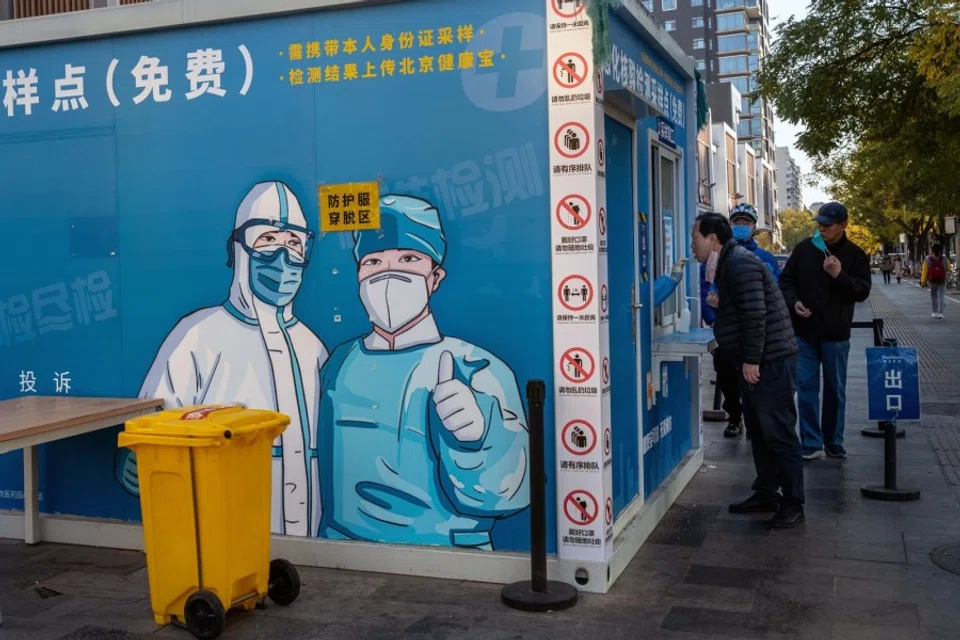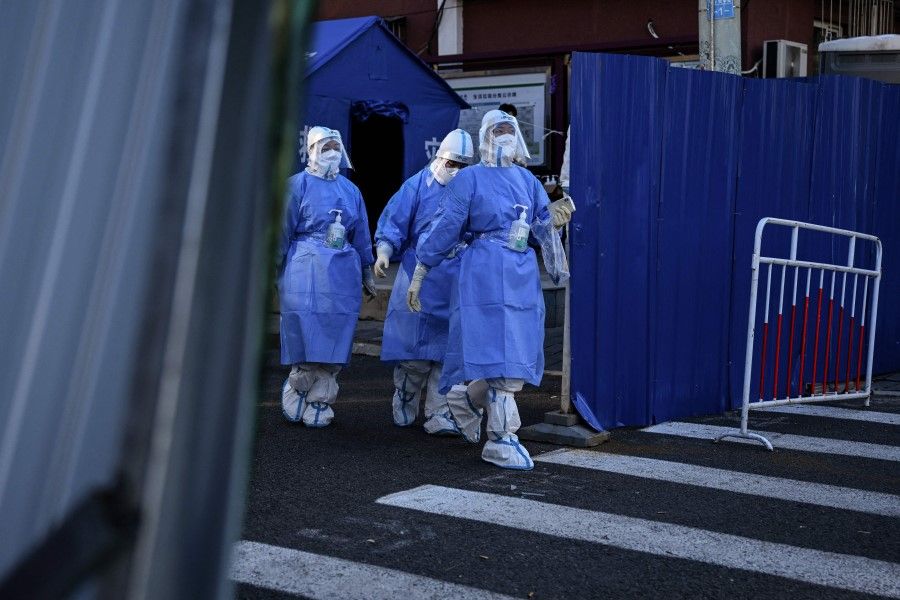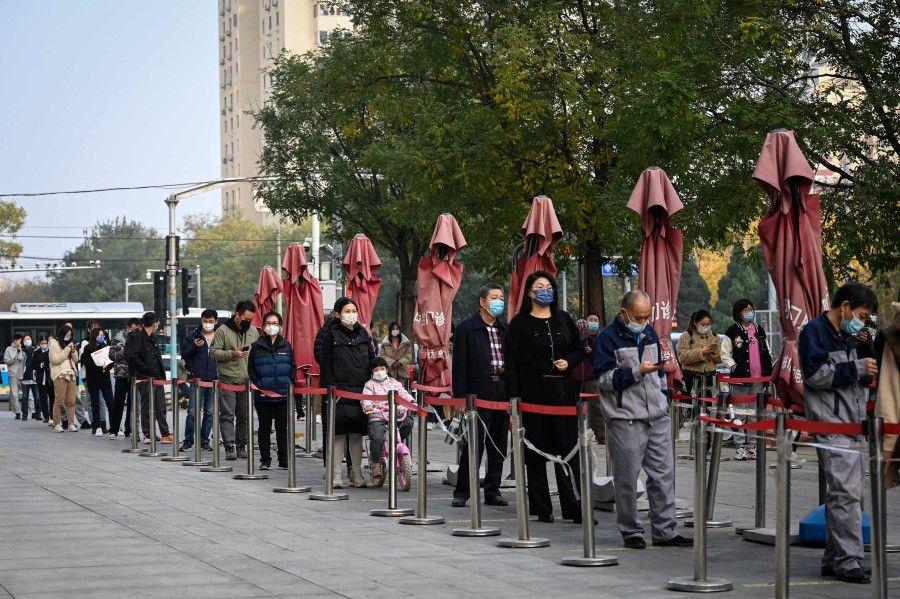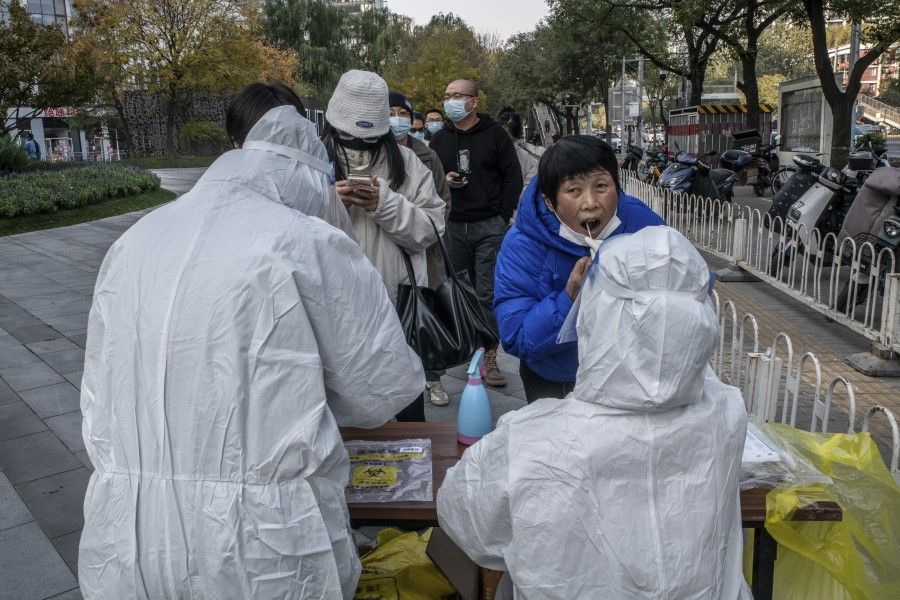China eases pandemic rules but people are worried

Since the Chinese authorities released 20 new measures to optimise existing pandemic controls, reactions have been divided. Some praise it as the "biggest gift" from the authorities to the people for Singles Day - a shopping festival in China held annually on 11 November - while others worry that easing pandemic measures will lead to another outbreak and lay to waste China's efforts over the past three years.
Worries remain
Supporters feel that with most countries relaxing controls and even "lying flat", it is difficult for China to stand on its own, especially as the impact of strict pandemic controls on the economy and society has become unbearable.
Indeed, the economic downturn has strained local governments' finances, while abrupt lockdowns of cities and neighbourhoods have led to public outcry and tough times for grassroots cadres. With the increasing costs of prevention and control and maintaining stability, authorities are left with no choice but to ease measures.
On the day the 20 new measures were released, A-shares, Hong Kong shares and China concept stocks steadily rebounded, while the declining RMB climbed back up, showing that the new measures are keeping with the times and beneficial for the economy.
Given that the Covid-19 mutations remain uncertain, they believe that easing measures would lead to a wider spread of Covid-19, which would in turn have an even bigger impact on the economy and society.

However, those who are worried feel that China's strict controls over the past three years have been effective. Given that the Covid-19 mutations remain uncertain, they believe that easing measures would lead to a wider spread of Covid-19, which would in turn have an even bigger impact on the economy and society. They feel that once the infection spreads through the country, healthcare resources would be strained and the public would be left to fend for themselves.
Science-based and precise measures
The official response remains that China has to tackle both pandemic controls and economic growth. On 12 November, Lei Haichao, deputy director of the National Health Commission, said that the overall aim is to control the pandemic, stabilise the economy and grow safely, and effectively contain the virus while minimising its impact on economic and social development and public services.
Evidently, pandemic measures have been significantly eased. For example, the quarantine period has been reduced from "14+7" (14 days in a hotel or facility and the next 7 days at home) to "7+3", and now to "5+3" under the new measures. Furthermore, secondary close contacts will no longer be identified, and "medium" risk area categorisation will be removed. The "circuit breaker" system where airlines faced a suspension of flights if there were too many Covid-infected passengers will also be removed.

Chang Jile, deputy director of the National Administration of Disease Prevention and Control said that cutting the quarantine period at designated sites by two days could save quarantine resources by 30%, while removing the identification of secondary close contacts and medium-risk areas would relieve public services for other needs.
The health commission emphasised that the 20 new measures are based on scientific knowledge and new research findings, to make the implementation of control measures more science-based and precise - it is by no means slacking or "lying flat".
Some people in areas under lockdown have said that even after the 20 new measures were announced, their neighbourhoods have not lifted the lockdowns.
Nonetheless, worried citizens ask: how will the easing of measures stop the pandemic when the strict adherence to the previous lockdown measures did not achieve that?
In response, the officials would emphasise the effectiveness of normalised testing and advance alerts, improving surveillance sensitivity for early detection and control for those at risk; improving emergency response systems for swift and decisive action when local outbreaks are detected; greater focus on targeted, effective responses for megacities and major cities, with the greatest impact at the smallest cost; and having medical reserves compatible with the size of various cities.
However, it is not easy to implement the new measures. Some people in areas under lockdown have said that even after the 20 new measures were announced, their neighbourhoods have not lifted the lockdowns.

It is indeed difficult for local governments to implement the new measures. How would they determine if there are just a few isolated cases, or dozens? What are the criteria for confirming or removing "high" and "low" risk statuses? The 20 new measures are not about "one size fits all" or stacking on extra measures, but once the virus spreads, will local officials continue to be held accountable?
Evidently, the new measures will be more demanding for local officials. It would be impossible to guarantee precise pandemic control, complete prevention of large-scale outbreaks, and minimal impact on the economy - one will need to take it a step at a time.
Once that step is taken, it will be harder to tighten again, and the country can only move towards continued easing.
Moving towards opening up
For the higher-ups, the implementation of the 20 new measures does not mean that the country has completely opened up, but is mitigating the previously strict control measures and their huge impact on the economy and society, to resume economic growth and normal external exchanges, so that the pandemic will not eclipse growth as a top priority.
However, the new measures are an important step toward easing pandemic controls. Once that step is taken, it will be harder to tighten again, and the country can only move towards continued easing. The 20 measures have done away with identifying secondary contacts and shortened the isolation periods for close contacts. The next step is likely to only isolate confirmed cases and not close contacts. Thereafter, confirmed cases that do not require hospitalisation would be allowed to isolate at home. That would be close to fully opening up.

As for the possible large-scale spread of the virus, the 20 new measures also offer a response. It calls for ramping up medical resources and establishing a triage system for diagnosis and treatments, preparing beds for hospitalisations and severe cases, increasing treatment resources, pushing for Covid-19 vaccinations, stepping up reserves of treatment-related drugs and emergency drugs and treatment facilities, and strengthening key institutions and protection of vulnerable groups - all in preparation for a possible large-scale spread of the virus.
Many people in China are still terrified of the virus and believe that its spread will wreak incalculable damage on them and their families.
In fact, given that lockdowns are unsustainable, the economic downturn difficult to avoid, and the virus being significantly weaker but more transmissible, it is harder for the authorities to stop the pandemic's spread through strict control measures. The more relaxed measures are the pragmatic choice.
Many people in China are still terrified of the virus and believe that its spread will wreak incalculable damage on them and their families. The authorities will also have to assuage these worries.
Regardless of public sentiment, China has begun moving towards easing controls. Even if the 20 new measures cannot stop the spread of Covid-19, the authorities can only go with the flow and seek a new balance between pandemic control and economic and social development, to ensure China's growth momentum is not disrupted and crippled by the pandemic and other factors.
This article was first published in Lianhe Zaobao as "'二十条'能否阻住疫情蔓延?".
Related: Tough Covid measures in China may drag on for another year | Post-lockdown Shanghai is as tense as ever | Post-lockdown Shanghai is as tense as ever | No end to China's zero-Covid in the short term | China's zero-Covid policy unlikely to ease after party congress
